Stefano Mariani
Transformer-Based Approach to Optimal Sensor Placement for Structural Health Monitoring of Probe Cards
Sep 09, 2025Abstract:This paper presents an innovative Transformer-based deep learning strategy for optimizing the placement of sensors aiming at structural health monitoring of semiconductor probe cards. Failures in probe cards, including substrate cracks and loosened screws, would critically affect semiconductor manufacturing yield and reliability. Some failure modes could be detected by equipping a probe card with adequate sensors. Frequency response functions from simulated failure scenarios are adopted within a finite element model of a probe card. A comprehensive dataset, enriched by physics-informed scenario expansion and physics-aware statistical data augmentation, is exploited to train a hybrid Convolutional Neural Network and Transformer model. The model achieves high accuracy (99.83%) in classifying the probe card health states (baseline, loose screw, crack) and an excellent crack detection recall (99.73%). Model robustness is confirmed through a rigorous framework of 3 repetitions of 10-fold stratified cross-validation. The attention mechanism also pinpoints critical sensor locations: an analysis of the attention weights offers actionable insights for designing efficient, cost-effective monitoring systems by optimizing sensor configurations. This research highlights the capability of attention-based deep learning to advance proactive maintenance, enhancing operational reliability and yield in semiconductor manufacturing.
A digital twin framework for civil engineering structures
Aug 02, 2023



Abstract:The digital twin concept represents an appealing opportunity to advance condition-based and predictive maintenance paradigms for civil engineering systems, thus allowing reduced lifecycle costs, increased system safety, and increased system availability. This work proposes a predictive digital twin approach to the health monitoring, maintenance, and management planning of civil engineering structures. The asset-twin coupled dynamical system is encoded employing a probabilistic graphical model, which allows all relevant sources of uncertainty to be taken into account. In particular, the time-repeating observations-to-decisions flow is modeled using a dynamic Bayesian network. Real-time structural health diagnostics are provided by assimilating sensed data with deep learning models. The digital twin state is continually updated in a sequential Bayesian inference fashion. This is then exploited to inform the optimal planning of maintenance and management actions within a dynamic decision-making framework. A preliminary offline phase involves the population of training datasets through a reduced-order numerical model and the computation of a health-dependent control policy. The strategy is assessed on two synthetic case studies, involving a cantilever beam and a railway bridge, demonstrating the dynamic decision-making capabilities of health-aware digital twins.
Space-fluid Adaptive Sampling by Self-Organisation
Oct 31, 2022



Abstract:A recurrent task in coordinated systems is managing (estimating, predicting, or controlling) signals that vary in space, such as distributed sensed data or computation outcomes. Especially in large-scale settings, the problem can be addressed through decentralised and situated computing systems: nodes can locally sense, process, and act upon signals, and coordinate with neighbours to implement collective strategies. Accordingly, in this work we devise distributed coordination strategies for the estimation of a spatial phenomenon through collaborative adaptive sampling. Our design is based on the idea of dynamically partitioning space into regions that compete and grow/shrink to provide accurate aggregate sampling. Such regions hence define a sort of virtualised space that is "fluid", since its structure adapts in response to pressure forces exerted by the underlying phenomenon. We provide an adaptive sampling algorithm in the field-based coordination framework, and prove it is self-stabilising and locally optimal. Finally, we verify by simulation that the proposed algorithm effectively carries out a spatially adaptive sampling while maintaining a tuneable trade-off between accuracy and efficiency.
Individual and Collective Autonomous Development
Oct 03, 2021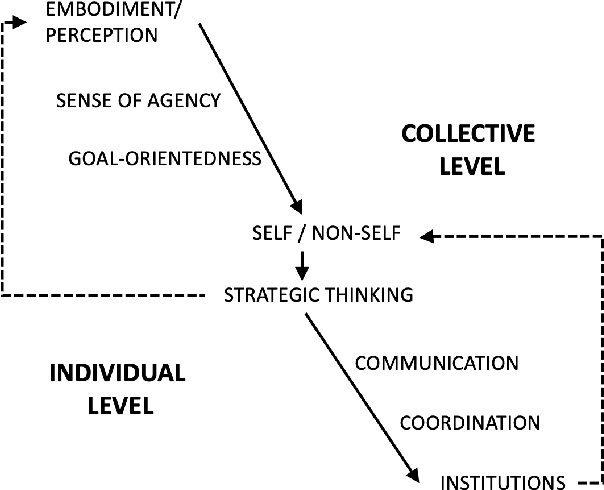
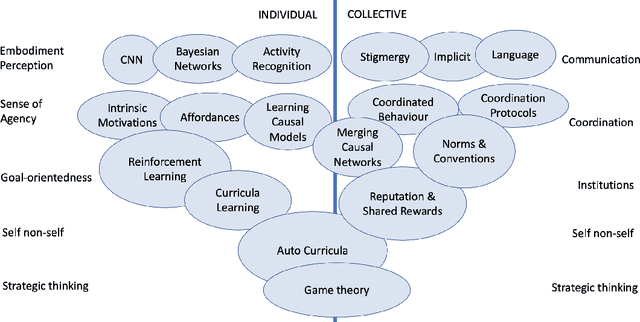
Abstract:The increasing complexity and unpredictability of many ICT scenarios let us envision that future systems will have to dynamically learn how to act and adapt to face evolving situations with little or no a priori knowledge, both at the level of individual components and at the collective level. In other words, such systems should become able to autonomously develop models of themselves and of their environment. Autonomous development includes: learning models of own capabilities; learning how to act purposefully towards the achievement of specific goals; and learning how to act collectively, i.e., accounting for the presence of others. In this paper, we introduce the vision of autonomous development in ICT systems, by framing its key concepts and by illustrating suitable application domains. Then, we overview the many research areas that are contributing or can potentially contribute to the realization of the vision, and identify some key research challenges.
Online structural health monitoring by model order reduction and deep learning algorithms
Mar 26, 2021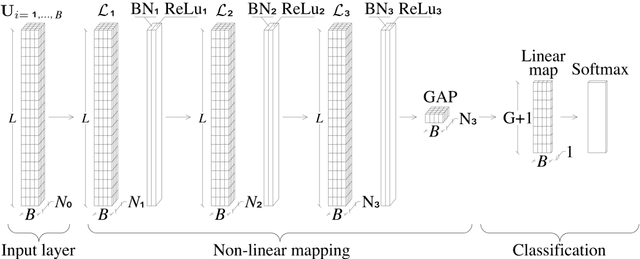
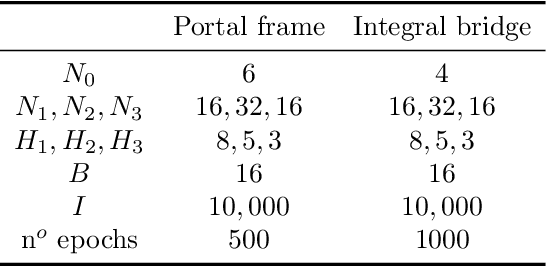
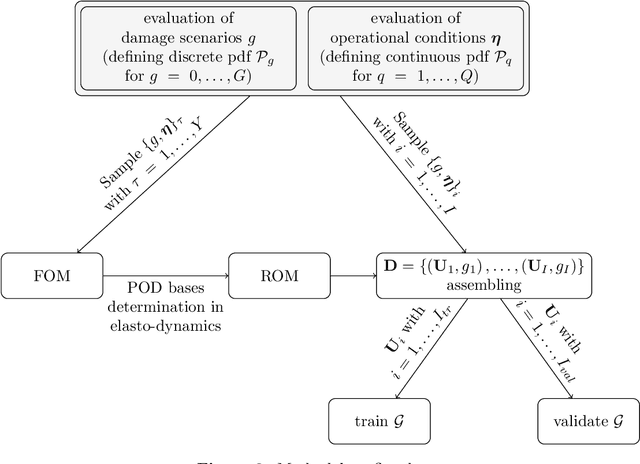
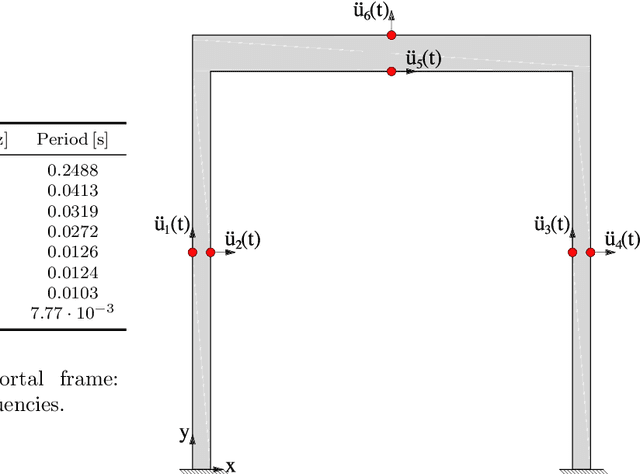
Abstract:Within a structural health monitoring (SHM) framework, we propose a simulation-based classification strategy to move towards online damage localization. The procedure combines parametric Model Order Reduction (MOR) techniques and Fully Convolutional Networks (FCNs) to analyze raw vibration measurements recorded on the monitored structure. First, a dataset of possible structural responses under varying operational conditions is built through a physics-based model, allowing for a finite set of predefined damage scenarios. Then, the dataset is used for the offline training of the FCN. Because of the extremely large number of model evaluations required by the dataset construction, MOR techniques are employed to reduce the computational burden. The trained classifier is shown to be able to map unseen vibrational recordings, e.g. collected on-the-fly from sensors placed on the structure, to the actual damage state, thus providing information concerning the presence and also the location of damage. The proposed strategy has been validated by means of two case studies, concerning a 2D portal frame and a 3D portal frame railway bridge; MOR techniques have allowed us to respectively speed up the analyses about 30 and 420 times. For both the case studies, after training the classifier has attained an accuracy greater than 85%.
Fully convolutional networks for structural health monitoring through multivariate time series classification
Feb 12, 2020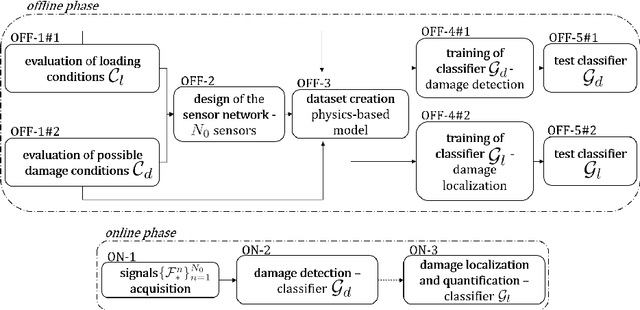

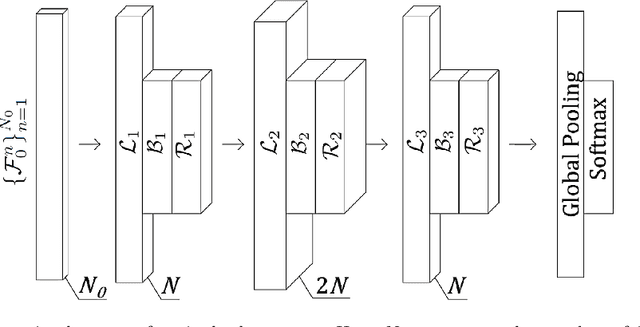
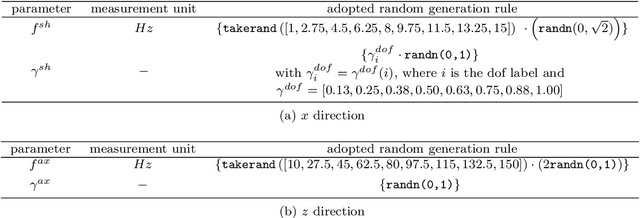
Abstract:We propose a novel approach to Structural Health Monitoring (SHM), aiming at the automatic identification of damage-sensitive features from data acquired through pervasive sensor systems. Damage detection and localization are formulated as classification problems, and tackled through Fully Convolutional Networks (FCNs). A supervised training of the proposed network architecture is performed on data extracted from numerical simulations of a physics-based model (playing the role of digital twin of the structure to be monitored) accounting for different damage scenarios. By relying on this simplified model of the structure, several load conditions are considered during the training phase of the FCN, whose architecture has been designed to deal with time series of different length. The training of the neural network is done before the monitoring system starts operating, thus enabling a real time damage classification. The numerical performances of the proposed strategy are assessed on a numerical benchmark case consisting of an eight-story shear building subjected to two load types, one of which modeling random vibrations due to low-energy seismicity. Measurement noise has been added to the responses of the structure to mimic the outputs of a real monitoring system. Extremely good classification capacities are shown: among the nine possible alternatives (represented by the healthy state and by a damage at any floor), damage is correctly classified in up to 95% of cases, thus showing the strong potential of the proposed approach in view of the application to real-life cases.
Logic Programming as a Service
Sep 25, 2018
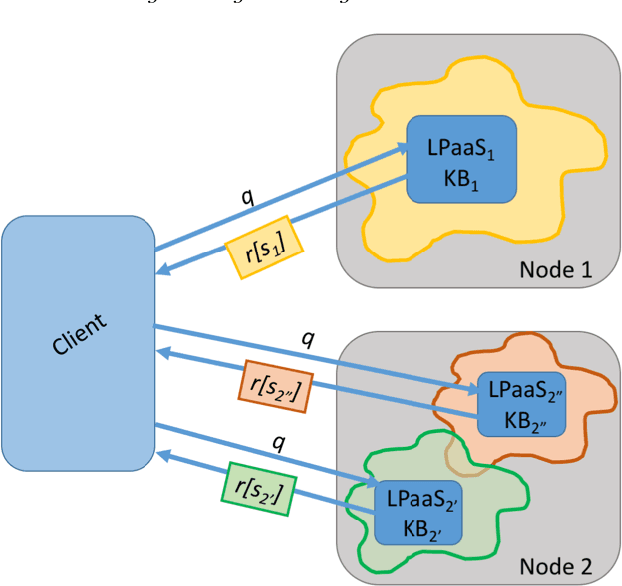
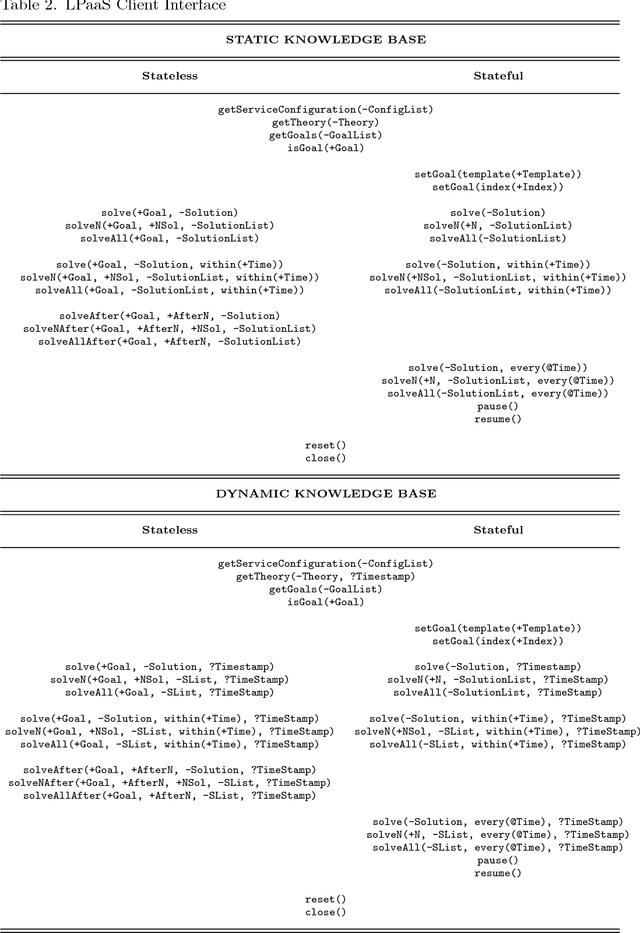
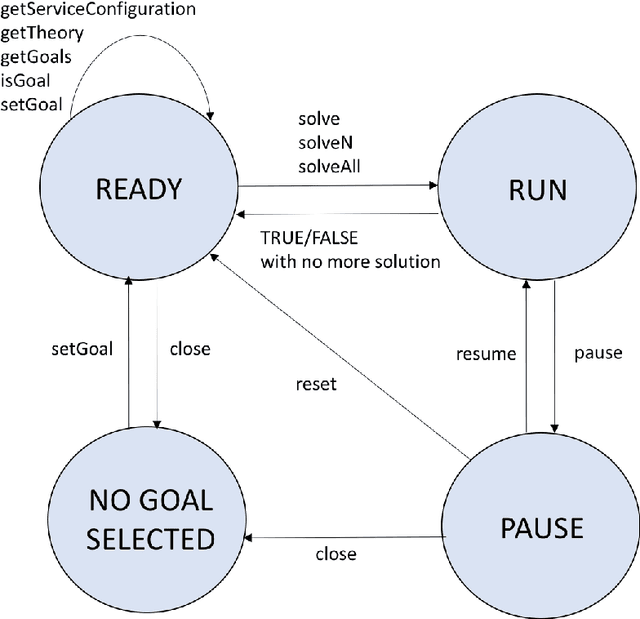
Abstract:New generations of distributed systems are opening novel perspectives for logic programming (LP): on the one hand, service-oriented architectures represent nowadays the standard approach for distributed systems engineering; on the other hand, pervasive systems mandate for situated intelligence. In this paper we introduce the notion of Logic Programming as a Service (LPaaS) as a means to address the needs of pervasive intelligent systems through logic engines exploited as a distributed service. First we define the abstract architectural model by re-interpreting classical LP notions in the new context; then we elaborate on the nature of LP interpreted as a service by describing the basic LPaaS interface. Finally, we show how LPaaS works in practice by discussing its implementation in terms of distributed tuProlog engines, accounting for basic issues such as interoperability and configurability.
 Add to Chrome
Add to Chrome Add to Firefox
Add to Firefox Add to Edge
Add to Edge